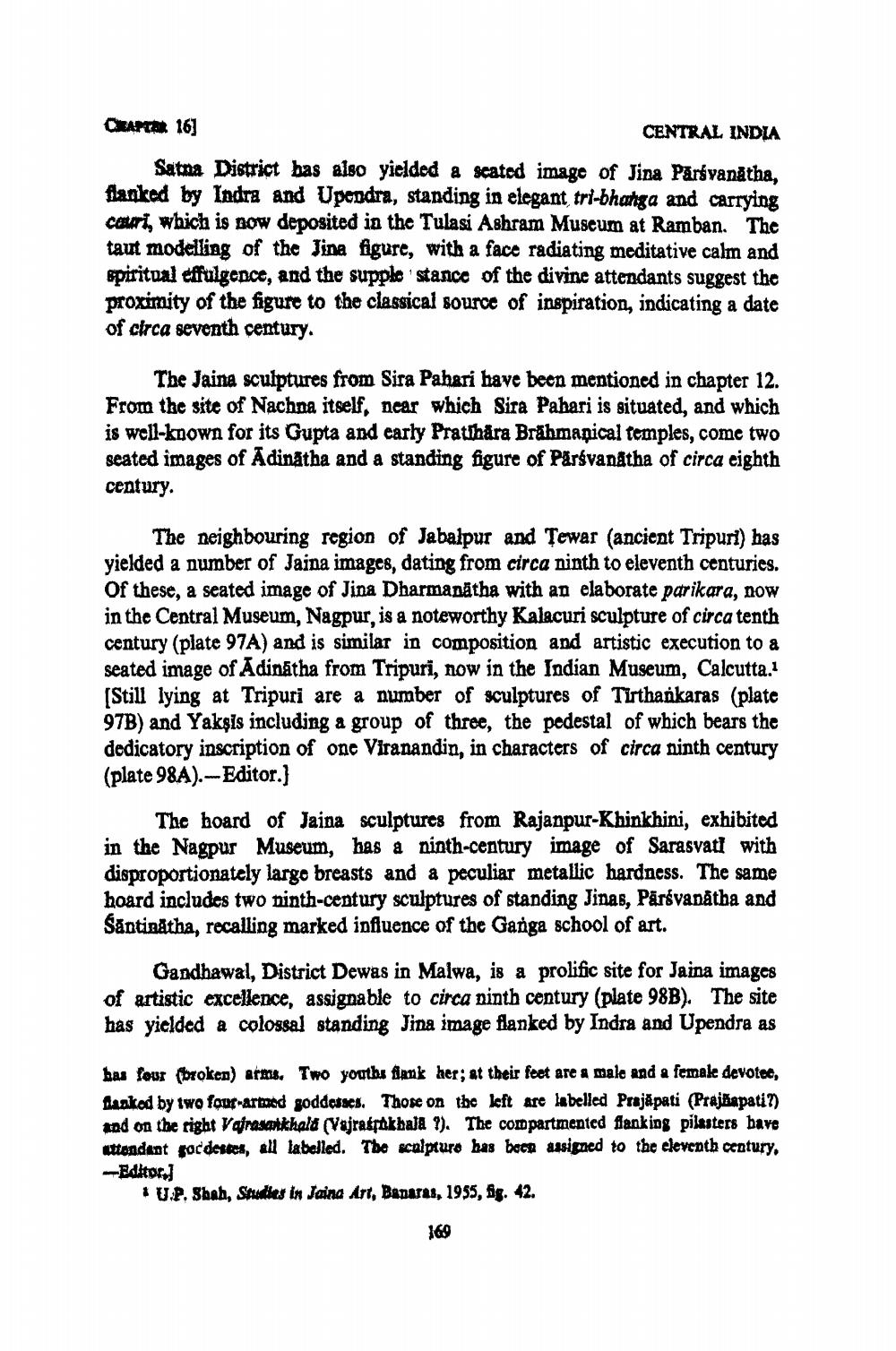________________
CHAMA 16
CENTRAL INDIA
Satna District has also yielded a scated image of Jina Parávanátha, flanked by Indra and Upendra, standing in elegant tri-bhanga and carrying caurl, which is now deposited in the Tulasi Ashram Museum at Ramban. The taut modelling of the Jina figure, with a face radiating meditative calm and spiritual effulgence, and the supple stance of the divine attendants suggest the proximity of the figure to the classical source of inspiration, indicating a date of circa seventh century.
The Jaina sculptures from Sira Pahari have been mentioned in chapter 12. From the site of Nachna itself, ncar which Sira Pahari is situated, and which is well-known for its Gupta and early Pratthåra Brahmapical temples, come two seated images of Adinatha and a standing figure of Pärsvanátha of circa eighth century.
The neighbouring region of Jabalpur and Tewar (ancient Tripurt) has yielded a number of Jaina images, dating from circa ninth to eleventh centuries. Of these, a seated image of Jina Dharmanatha with an elaborate parikara, now in the Central Museum, Nagpur, is a noteworthy Kalacuri sculpture of circa tenth century (plate 97A) and is similar in composition and artistic execution to a seated image of Adinatha from Tripuri, now in the Indian Museum, Calcutta. (Still lying at Tripuri are a number of sculptures of Tirtharkaras (plate 97B) and Yaksis including a group of three, the pedestal of which bears the dedicatory inscription of one Viranandin, in characters of circa ninth century (plate 98A).- Editor.)
The board of Jaina sculptures from Rajanpur-Khinkhini, exhibited in the Nagpur Museum, has a ninth-century image of Sarasvati with disproportionately large breasts and a peculiar metallic hardness. The same hoard includes two ninth-century sculptures of standing Jinas, Pārsvanátha and Santinatha, recalling marked influence of the Ganga school of art.
Gandhawal, District Dewas in Malwa, is a prolific site for Jaina images of artistic excellence, assignable to circa ninth century (plate 98B). The site has yielded a colossal standing Jina image flanked by Indra and Upendra as
has four broken) arms. Two youths flank her; at their feet are malo and a female devotee, Bazkod by two four-armed goddesacs. Those on the left are labelled Prajapati (Prejšapati?) and on the right Vajrasa khald (Vajrashkbaja 2). The compartmented flanking pilasters bave attendant gocderen, all labelled. The scalpture has been assigned to the eleventh century, Editor]
* U.P. Shah, Saudies in Jaina Art, Banaras, 1955, fig. 42.
169




